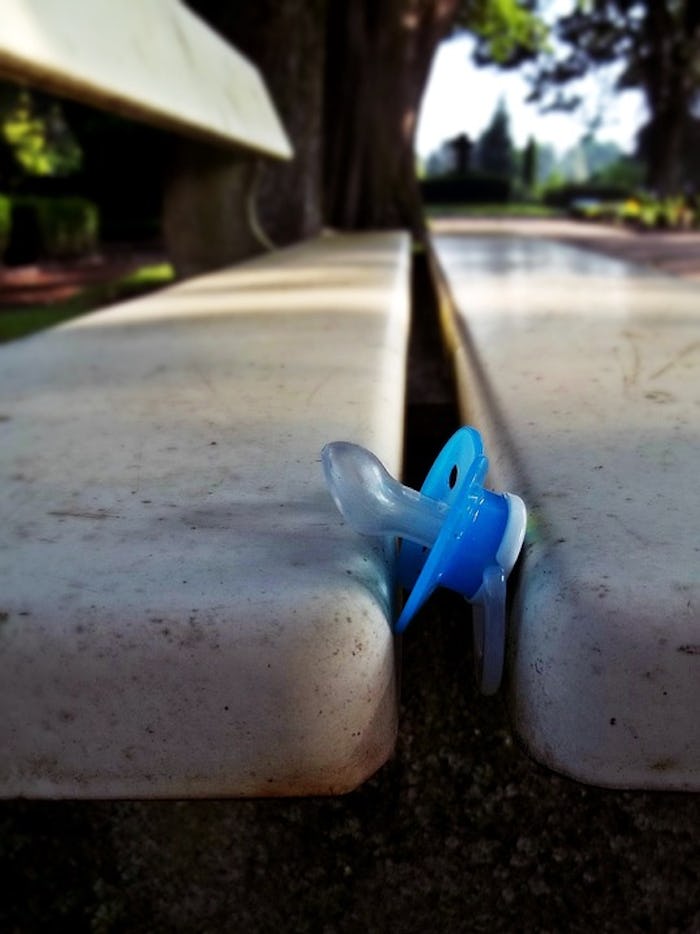Binky, paci, fussplug, hush button, or gaga — no matter what nickname it goes by in your house, pacifiers can become like an additional member of the family. When my boys were little, I never left the house without an arsenal of bee bees (my kids' name for their silicone soother) in the diaper bag. You can never be certain when one of those plugs will hit the ground in the most disgusting of places, so having back up is crucial. But knowing when to replace pacifiers is knowledge every parent should have, since too much wear and tear can cause those calming devices to become dangerous.
To stretch the longevity of pacifier, many parents choose to clean and sanitize pacifiers in a dishwasher cycle or boiling water, and although these methods do help with cleanliness, it can also be one of the factors in deterioration. As Parents magazine suggested, if you notice that a pacifier has become cracked or stained after cleaning, it's time to toss it in the trash. These indicators let you know that the pacifier is starting to breakdown and is no longer safe for your child to use. But there are more reasons than wear from over cleaning to cause you to part ways with the binky.
According to the website for Mayo Clinic, you should replace pacifiers often, especially making sure your little one has an appropriate sized paci for his age. Every few months, you should take inventory of your stock and make sure that you get rid of any pacifiers that are too small. When shopping for new pacifiers, look for the age range indicated on the packaging to be certain you're purchasing the right size for you child.
It's also important to keep in mind that each child has a different level of use for their pacifier, so checking the condition of your child's soother often will help you decide when it's time to throw one out. Baby Center recommended you look for discoloration as well as holes, tears, and weak spots that could cause the nipple to break off when sucked, putting your baby at risk of choking. So if your little nugget is a vigorous pacifier user, you will probably need to change out the pacifier stash more frequently.
Knowing when to keep, clean, or toss a pacifier will keep your little one safe while sucking and happily soothing their worries away.
